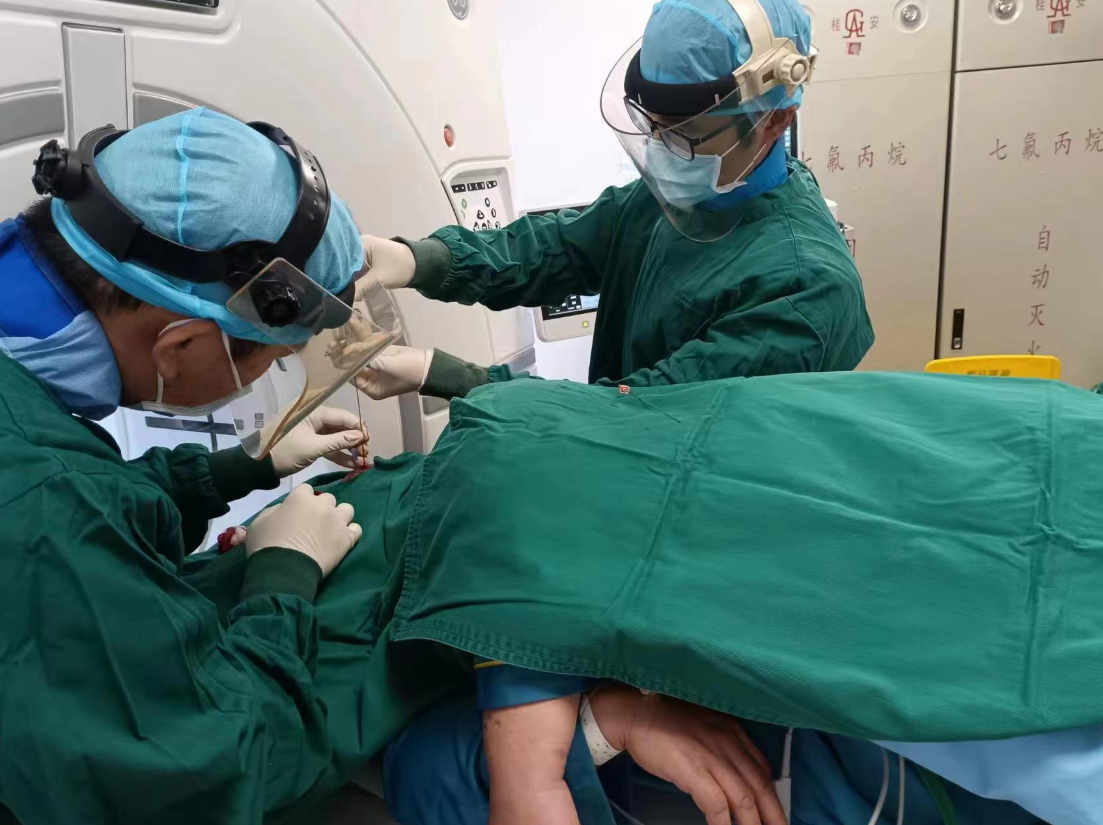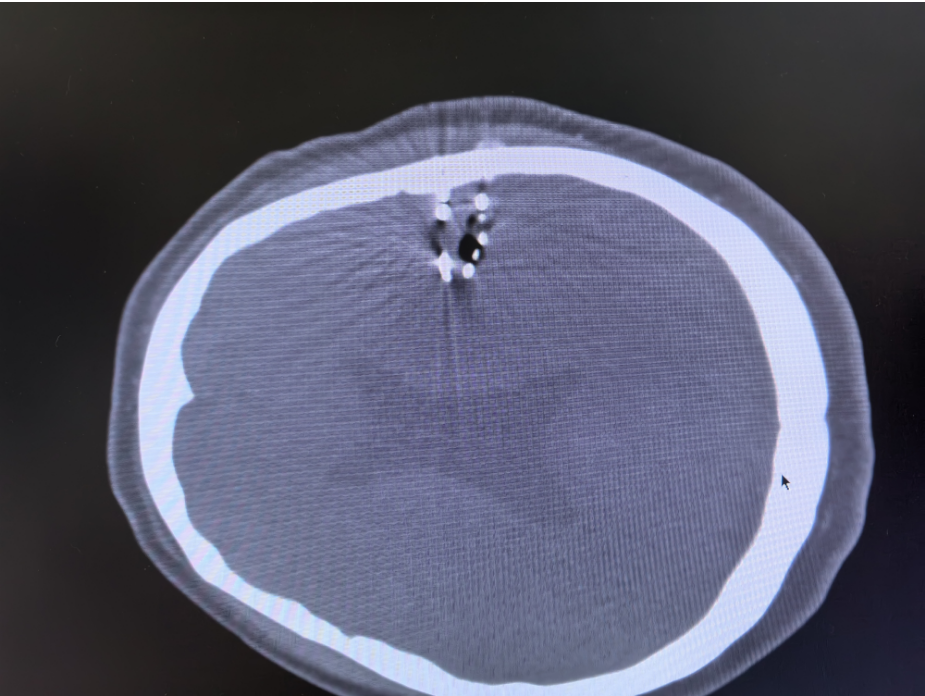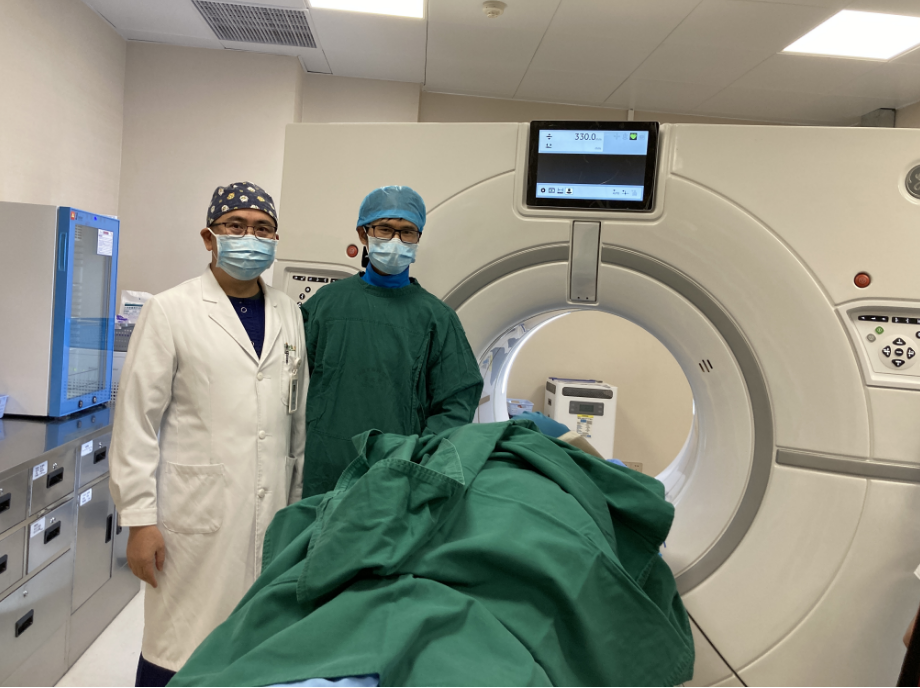Recently, with the assistance of the Anesthesiology Department and Imaging Department, the Minimally Invasive Treatment Center at Royal Lee Cancer Center in Guangzhou successfully conducted a brain radioactive iodine-125 particle implantation surgery, achieving a satisfactory outcome.

The surgery was performed on a 54-year-old female lung tumor patient who had previously undergone minimally invasive thoracoscopic surgery and oral targeted therapy, but later developed multiple brain metastases. Subsequently, she sought further treatment at our hospital. Under CT guidance, the "intracranial radioactive particle implantation surgery" was performed, using a gun-style particle implanter to implant 10 iodine-125 particles at 2 sites (each particle had an activity of 0.8mci). Follow-up head CT scans indicated good particle placement, with the patient showing normal consciousness, vital signs, language ability, and unhindered movement in various parts of the body, leading to a smooth discharge from the hospital.


What is Iodine-125 Particle Implantation Therapy?
Iodine-125 particle implantation is a form of short-range internal radiation therapy. This method involves precise guidance using imaging equipment such as CT and ultrasound, where low-energy gamma-ray emitting iodine-125 particles are percutaneously implanted directly into the tumor and surrounding tissues possibly affected by the tumor invasion. It provides continuous irradiation to the tumor tissue, causing sustained damage to tumor cells without harming normal tissues or causing only minimal damage.
Advantages of Iodine-125 Particle Implantation Therapy:
1. More precise treatment positioning: Guided by CT and ultrasound, the treatment is accurately targeted without damaging normal tissues.
2. Longer duration: After particle implantation, continuous irradiation occurs 24 hours a day, every minute, for up to 180 days.
3. Significant efficacy: Continuous, low-dose, high-precision radiation therapy effectively inhibits tumor cell proliferation with 24-hour repeated irradiation.
4. Low radiation energy: With a radiation distance of only 1.7 centimeters, most of the energy is absorbed by the tumor tissue, resulting in minimal damage to surrounding organs and normal cells, and mild systemic toxic side effects.

Which Diseases are Suitable for Iodine-125 Particle Implantation Therapy?
For certain tumors that recur or have localized metastases after surgery, iodine-125 particle implantation therapy offers advantages. It can be used as the primary treatment for tumors and, in some cases, as the preferred treatment method, such as in the treatment of prostate cancer.
For patients unwilling to undergo radical surgery or with inoperable solid tumors, iodine-125 particle implantation is a viable option. Additionally, for patients with metastatic tumors (non-widespread), using iodine-125 particle implantation therapy not only effectively controls the growth of metastases but also preserves organ function and reduces pain. For tumors that cannot be surgically removed due to factors such as physical condition and tumor location, iodine-125 particle implantation therapy can also be considered.
